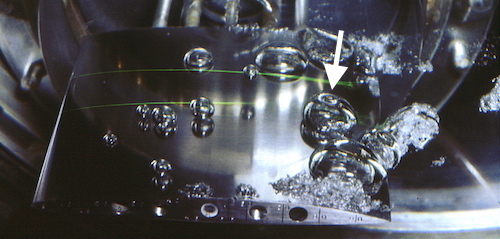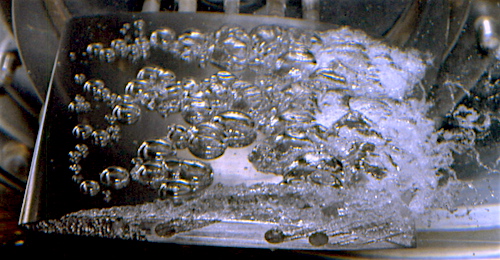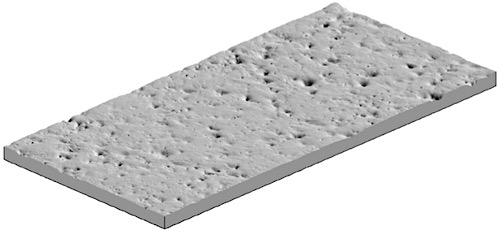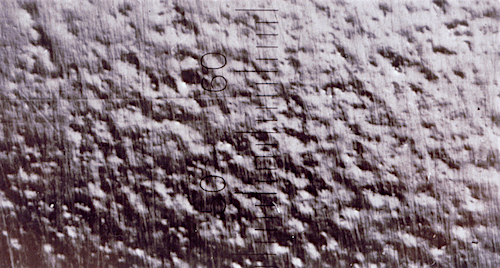 |
- When a bubble collapses near a wall, it does not remain spherical.
- The upper part of the interface becomes deformed (see white arrow).
- A liquid microjet develops and pierces the bubble that becomes toroidal.
- When the microjet hits the wall, it may damage it very locally.
|

|
- Another case of traveling bubble cavitation.
- Deviation of bubbles from sphericity is also clearly visible.
|

|
- Each cavitation bubble when collapsing may produce a pit on the wall.
- The impact load due to the collapse of a single bubble may reach several GPa (GigaPascal).
- Damage is due to the formation of microjet and/or shock waves that impact the wall.
- Here, the surface is 2 mm x 4 mm and pit depth is of the order of a few micrometers only.
|

|
- If the time of exposure to cavitation is increased, pits overlap.
- Damage appears as a characteristic orange peel pattern.
- 1 graduation = 0.15 mm.
|

|
- Cavitation erosion damage in a gear pump.
- Mass loss and material removal are observed.
|
| 1 2 3 4 |









